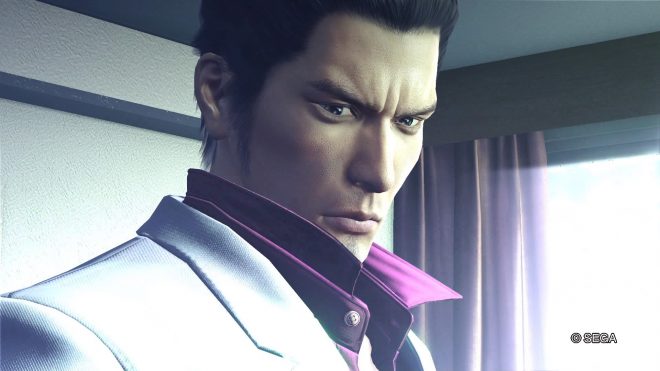Yakuza Kiwami — Extreme Heat

Yakuza 0 marked a good restarting point for the Yakuza franchise in America, thanks to its status as the earliest canonical installment. It also had the benefit of being the first game in the series Sega felt comfortable in releasing on PS4 worldwide, to lure in players who were on the fence about the Yakuza series but wanted to play an installment on a new(er) console. 0 also contained all the best elements from the series, including an entertaining story with good characterization, good side quests, and several minigames, all wrapped in a late-1980s setting. It’s no surprise the game was an appealing niche hit.
Considering how well 0 was received critically and commercially, it was a little tough for the company to go from it to Yakuza Kiwami. Kiwami is a mostly straight remake of the first game in the series, which takes place after 0 canonically. It presents the same story with extra scenes and an overall presentation enhancement, with the addition of new quests and side activities that weren’t in the original and 0’s battle system. But nearly all its gameplay elements come up short compared to its predecessor.

The story begins around seven years after the end of 0 in 1995, with protagonist Kazuma Kiryu and best friend Akira “Nishiki” Nishikiyama still being members of the yakuza. The two of them are doing a good job rising in the ranks of what’s mostly an organized crime syndicate while living their lives, until Nishiki murders another high-ranking Yakuza member as revenge for sexually assaulting a friend. Kazuma takes the fall for the murder, and is imprisoned for a decade. When he’s released in December 2005, he reenters a changed society to deal with drastically altered yakuza factions. Nishiki has undergone the largest changes of all, going from a good guy who did questionable things as part of the yakuza to an outright villainous figure.
The story is mostly similar to the original, albeit expanded to show precisely how Nishiki became a villain, especially after his portrayal in 0. Despite the added content, it’s not quite as entertaining as 0’s tale, and is considerably shorter thanks to the older Yakuza games being smaller. But it’s still an entertaining story, and a good opportunity to see what happens with several characters established in the previous game. It also introduced faces that became main characters starting with this installment, like Haruka Sawamura and Makoto Date. It’s also entertaining due to how high the death count is compared to later games, since this game’s story was self-contained before it become a franchise.

Kiwami’s normal battles are initiated in a way similar to previous installments, where thugs affiliated with various groups confront Kazuma for a fight because of his tough guy looks while walking through Kamurocho. It was easy to segue right into its battles after playing 0, since the system is mostly identical to that game’s — right down to Kazuma having the same three main styles. It becomes too familiar when the bosses reuse nearly the entire move sets of characters from 0, though with some modifications.
Kazuma does have a style he didn’t use in 0: The Dragon of Dojima style. It’s the one he used in Yakuza 3, 4, and 5. But while everything is available when the game starts, Kazuma’s progression is reduced to a minimum after he’s freed from incarceration, due to his inaction while in prison. Worse, relearning all the Dragon of Dojima techniques can’t be done through obtaining experience points from normal encounters, but through special encounters. This makes it difficult to use for most of the game.

The Dragon of Dojima’s techniques are learned through a new feature known as the “Majima Everywhere” system. The slightly unhinged Goro Majima, one of the protagonists from 0, agrees to help Kazuma relearn his skills from the style after he’s freed from prison, and will pop up for a fight nearly everywhere in Kamurocho. It’s fun at first, especially with the creative ways in which Majima can assault Kazuma to initiate a battle; but this can get a little annoying late in the game. Majima can emerge from anywhere at any time during multiple points, and his extended health in the second half of the game will make for some long fights. But it’s the only way to learn most of the skills in the style, and while they aren’t necessary to finish the game, they’re fun to use.
As implied above, the game has plenty of side quests. Several return from the original, but others were added to this remake. The latter additions help make this feel like a newer Yakuza installment, as the original game and its sequel told serious crime drama stories while keeping humor to a minimum. The Yakuza games have successfully combined seriousness and humor without either element feeling out of place, and that style continues here.

The entire game takes place in Kamurocho, the series’ mainstay location, which is based on Tokyo red-light district Kabukicho. I haven’t tired of the city yet, but I was disappointed to see how there were slightly less locations to enter compared to 0. You’d think the opposite would be the case given how this is the only location in this game.
The soundtrack consists of several remixes from the original, and it’s good overall despite several tracks being reused from recent games. But I’m not a fan of some redone tracks. One key example is the main battle theme, “Funk Goes On.” The original was as funky as the name implies, but the remixed version tones down the funk and increases the techno despite keeping the same name. The Funk Somewhat Goes On.
Yakuza Kiwami feels more like a standalone expansion to Yakuza 0 than a sequel, though it was priced accordingly when it first released. But despite it being a step down, it’s still a fun game that’s worth playing for anyone who enjoyed previous titles. It’s shorter than 0, but it still provides hours upon hours of entertainment.





